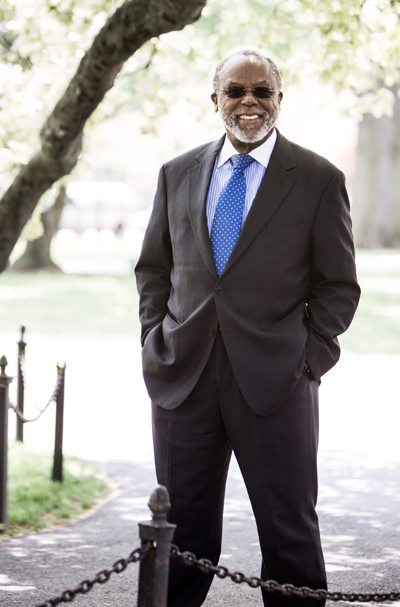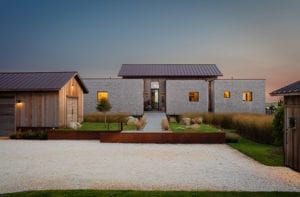Five Questions: Ted Landsmark
July 19, 2016
Architect, attorney, and former president of Boston Architectural College Ted Landsmark says New England is poised to undergo some much-needed planning, design, and architectural changes.
Text by Robert Kiener Photography by Trevor Reid
 1. You have said that design is failing us. What do you mean by that?
1. You have said that design is failing us. What do you mean by that?
There are failures at both the macro and the micro scale. For example, we are not using design to address and mitigate the issues of climate change, coastal resilience, and the absence of transportation systems to keep up with the huge growth and development in Boston and other coastal cities. At the micro scale, we are failing to prepare for an aging population and the emergence of millennial families with needs for their children. We are at a crisis point in not applying what we know about good design toward improving living conditions in our cities and around the world. It is disturbing that some really important technological advances have been made in design, but we see far too few applications of them when we plan our cities or homes.
2. Are architects partly to blame?
We have tended to celebrate the work of individual architects whose signature buildings satisfy the branding and egoistic needs of large corporations or private individuals without applying that same skill set toward communities that need affordable housing, better housing for seniors and children, and improved access to parks and waterfronts. We have celebrated the high-rise residential skyscrapers that have sprouted in New York and Boston and other major cities without providing sufficient incentives for energy-efficient homes for people of limited financial resources.
3. You’ve often spoken of the need to “recalibrate” design. How does this apply to high-end residential homes?
Wonderful new designs have emerged in New England largely based upon our Shingle-style traditions and reflective of our connectedness to natural environments. However, at the same time, we have seen less innovation in energy usage, in transportation support, our use of interior furnishings, and even in our support of regional art and craft. Many of the homes do not draw upon the regional, artistic, and cultural consciousness that is distinctive to New England. While the exteriors may reflect regional aesthetics, the interiors often do not. There could be more of a commitment to supporting our talented local artisans and fine artists, and reflecting more of our New England consciousness.
4. So home design needs to be more forward-looking?
Exactly. We can take advantage of many of the technological developments that are emerging from our universities, the fabrics coming out of MIT’s new Manufacturing Innovation Institute, the new window systems coming out of our design schools, and the ways we think about energy efficiency. We can apply those to a much greater extent in our high-end homes in much the same way that architects did so in Boston and in places like Lexington and Lincoln in the late 1950s and 1960s, when designers and residents came together to do something innovative.
5. Are you optimistic about the future of design?
I am extremely optimistic. An emerging generation of planners and designers is thinking about resilience and coastline development, reducing the use of single automobiles, developing mass transit, and creating cultural centers that are attractive to young families. If you look at the kinds of projects our schools are posting on their websites, there is much more of an inclination to see projects that serve the needs of communities rather than the kinds of egocentric, signature buildings that we saw fifteen years ago. •
Share
![NEH-Logo_Black[1] NEH-Logo_Black[1]](https://www.nehomemag.com/wp-content/uploads/2022/08/NEH-Logo_Black1-300x162.jpg)








You must be logged in to post a comment.